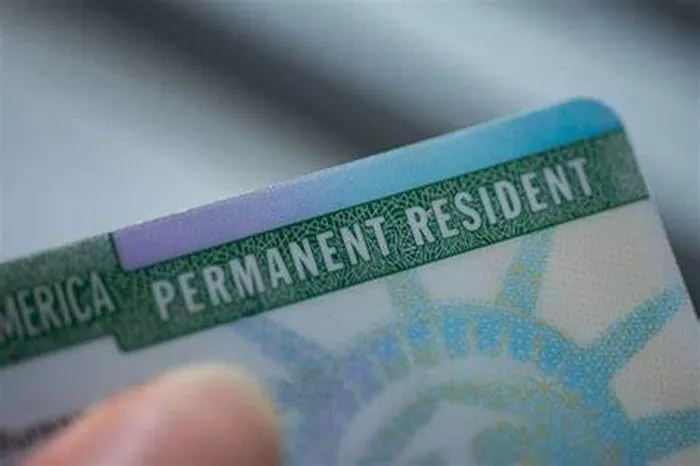Immigrating to the United States is a dream for many individuals around the world. However, navigating the complex immigration process can be daunting. From understanding the various green card categories to factors influencing processing times, applicants need to be well-informed and prepared for the journey ahead. In this article, we delve into the intricacies of the immigration process, shedding light on the different pathways to obtaining a green card and the factors that can impact processing times.
Green Card Categories and Processing Times
1. Family-based Green Cards: The family-based immigration system allows U.S. citizens and lawful permanent residents (green card holders) to sponsor certain family members for permanent residency. The categories include spouses, parents, children, and siblings. Processing times vary depending on the specific relationship and the applicant’s country of origin. While spouses and minor children of U.S. citizens generally have shorter processing times, siblings of U.S. citizens may face longer wait times due to visa backlogs, especially for individuals from countries with high demand.
2. Employment-based Green Cards: Employment-based immigration offers pathways for individuals with specialized skills, advanced degrees, or exceptional abilities to obtain permanent residency in the United States. The employment-based categories include EB-1 (priority workers), EB-2 (professionals with advanced degrees or exceptional ability), and EB-3 (skilled workers, professionals, and unskilled workers). Processing times can vary significantly based on factors such as the applicant’s priority date, labor certification (PERM) approval, and country of chargeability. Individuals from countries with high demand may experience longer processing times due to per-country limits.
3. Diversity Visa Lottery: The Diversity Visa (DV) Lottery, also known as the Green Card Lottery, is a program that randomly selects individuals from countries with historically low rates of immigration to the United States. Winners of the DV lottery undergo a rigorous screening process and must meet eligibility requirements to obtain a green card. The DV lottery opens once a year, and selected applicants have a limited time to complete their immigration process, adding an element of uncertainty to the timeline.
4. Humanitarian Green Cards: In certain cases, individuals may qualify for green cards based on humanitarian grounds, such as asylum or refugee status. These cases involve unique circumstances and may have different processing times compared to other green card categories. Individuals seeking asylum or refugee status must demonstrate a well-founded fear of persecution or prove that they meet the criteria for refugee status under U.S. law.
Factors Influencing Processing Times
1. Country of Origin: Visa quotas and per-country limits set by the U.S. government can significantly impact processing times for individuals from certain countries. Countries with high levels of immigration may face longer wait times due to visa backlogs and demand exceeding available visa numbers.
2. Application Category: Different green card categories have varying processing timelines. Employment-based petitions may require additional steps such as labor certification and approval from the U.S. Citizenship and Immigration Services (USCIS), which can extend the processing time compared to family-based petitions.
3. Application Completeness and Accuracy: Submitting a complete and accurate application is crucial to avoid delays or Requests for Evidence (RFEs) from USCIS. Missing documentation or errors in the application can lead to additional review and prolong the processing time.
4. USCIS Processing Backlogs: USCIS processing backlogs have been a significant issue in recent years, contributing to delays in adjudicating immigration applications. The backlog can vary depending on the type of application and USCIS workload priorities.
5. Security Clearances and Background Checks: Security clearances and background checks are mandatory for all green card applicants. The time required to complete these checks can vary based on individual circumstances and may add to the overall processing time.
Steps to Potentially Expedite the Process (if applicable)
1. Premium Processing: For certain employment-based petitions, applicants have the option of premium processing, which guarantees a faster adjudication process for an additional fee. However, premium processing may not be available for all categories, and the timeline can still be impacted by other factors such as background checks.
2. Maintaining Accurate and Complete Documentation: Ensuring all required documentation is included and accurate can help streamline the application process. Double-checking forms and supporting evidence before submission can help avoid delays and RFEs.
3. Responding Promptly to USCIS Requests: If USCIS issues an RFE or requests additional information, it is essential to respond promptly and thoroughly. Delays in responding to USCIS requests can prolong the processing time and may even lead to application denial.
4. Seeking Legal Assistance: Navigating the immigration process can be complex, especially for individuals with unique circumstances or challenges. Consulting with an experienced immigration attorney can provide valuable guidance and support throughout the application process, increasing the chances of success and minimizing delays.
Conclusion
In conclusion, the immigration process to obtain a green card in the United States involves navigating through various categories, each with its own processing times and requirements. Understanding the factors that influence processing times and taking proactive steps to expedite the process can help applicants navigate the immigration journey more efficiently. With careful preparation, attention to detail, and potentially seeking legal assistance when needed, individuals can increase their chances of success in achieving their immigration goals.


